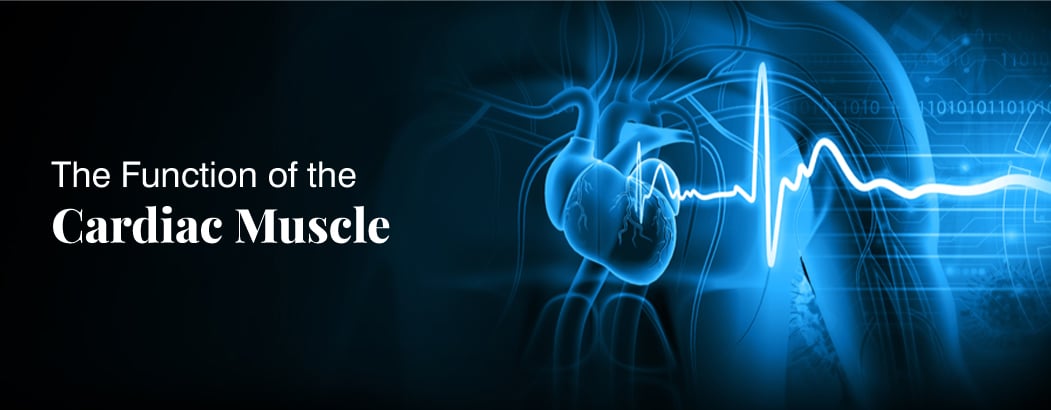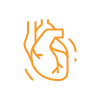What is the Specific Function of the Cardiac Muscle?
September 12, 2023

Introduction
The heart is an amazing organ in the body that continues to pump blood throughout our lives. This impressive process begins with the cardiac muscle. This article will go over the specific function of the cardiac muscle, as well as its structure and the vital role it plays in our overall health.
Table of Contents
- Introduction
- What is the Cardiac Muscle?
- Specific Function of Cardiac Muscle
- Structure of Cardiac Muscle
- Conclusion
- Frequently Asked Questions
What is the Cardiac Muscle?
A unique type of muscle, referred to as the myocardium, is found only in the heart, the cardiac muscle. However, unlike skeletal muscles that we control voluntarily or smooth muscles found in organs like the stomach and intestines, cardiac muscle is involuntary, meaning it contracts without conscious effort.
Specific Function of Cardiac Muscle
The cardiac muscle has the primary role of pumping blood all over the body to deliver oxygen and nutrients to the cells and also remove any waste materials. Here’s how it accomplishes this vital task:
- Contractions: The heart, on the other hand, beats constantly because cardiac muscle contracts rhythmically. Electrical impulses control this rhythmic contraction.
- Systole and diastole: It undergoes systole and diastole phases in every heartbeat cycle for a cardiac muscle. This is known as systole, which is where the blood forces its way from the chambers of the heart through the circulatory system. Diastole – the time that the heart takes to relax before refilling itself in readiness for filling another supply of blood.
- Cardiac Intercalated Discs: These connect the heart’s muscle cells together. The structures also help in the continuous transmission of electrical signals from one cell to another. They are necessary to ensure well-coordinated contractions.
Structure of Cardiac Muscle
To understand the specific function of the cardiac muscle, it’s important to grasp its unique structure.
- Cardiomyocytes: These cells form a type of muscle known as cardiac muscle and are referred to as cardiomyocytes. These are tall, cylindrical cells with single nuclei. It has a striped appearance that sets it apart from other types of muscles.
- Intercalated Discs: Previously, I have mentioned intercalated discs as those essential components present at the meeting point of the cardiomyocytes. They play an important role in initiating the process of generating electrical impulses and subsequent contractions.
- It also indicates that intercalated discs have gap junctions via which ions and electric charges travel at high speed between adjacent cardiomyocytes. This synchronisation is required for rhythmic contractions of the cardiac muscle.
- Blood Supply: The cardiac muscle has continuous contractions and needs plenty of blood supply to have enough nutrition and oxygen. Coronary arteries provide this critical circulation, which ensures that the heart itself does not have diseased muscle.
- Mitochondria: Cardiac muscle cells are packed with mitochondria, which are the source of the cell’s energy. This is due to the fact that the heart consumes a lot of energy in its pumping action.
Conclusion
The specific function of the cardiac muscle is nothing short of extraordinary. It makes use of rhythmic contraction for moving blood, oxygen, and nutrients into each individual cell and taking out waste from these cells. In order for the heart muscle to function as an efficient pump, intercalated discs and gap junctions must coordinate synchronous contractions.
The cardiac muscle is the most important component of the heart, and its unique purpose is understood. It is continuous, and without it, our lives would barely exist; thus, it is one truly amazing part of us on which we cannot but rely.
Frequently Asked Questions
1. Is the cardiac muscle the same as the skeletal muscle?
No, it is evident that cardiac muscle is different from the skeletal one. Cardiac muscles are striated; they do not work by themselves and only exist in the heart. However, skeletal muscle is voluntary in nature and provides mobility to the body.
2. What happens when the cardiac muscle is impaired?
Heart problems such as ventricular failure, cardiac arrhythmia, and various heart myopathies can result from damage to the myocardium. These conditions are characterized by inadequate blood flow throughout the heart.
3. How can I keep my cardiac muscle healthy?
Exercising regularly, proper eating, and controlling stress are some of things that you should do in order to keep your heart muscles healthy. It is advisable not to smoke or take excess amounts of alcohol.








